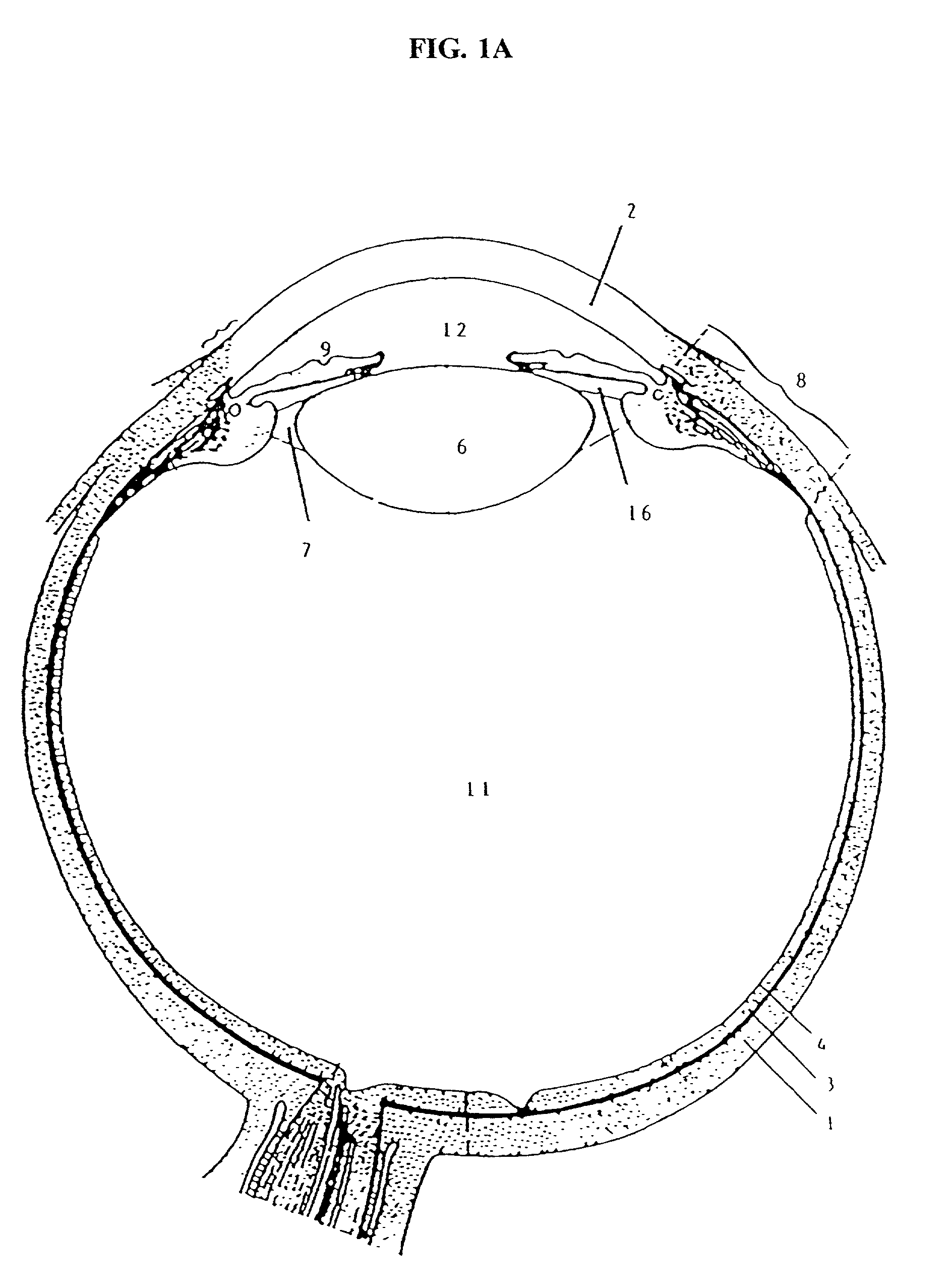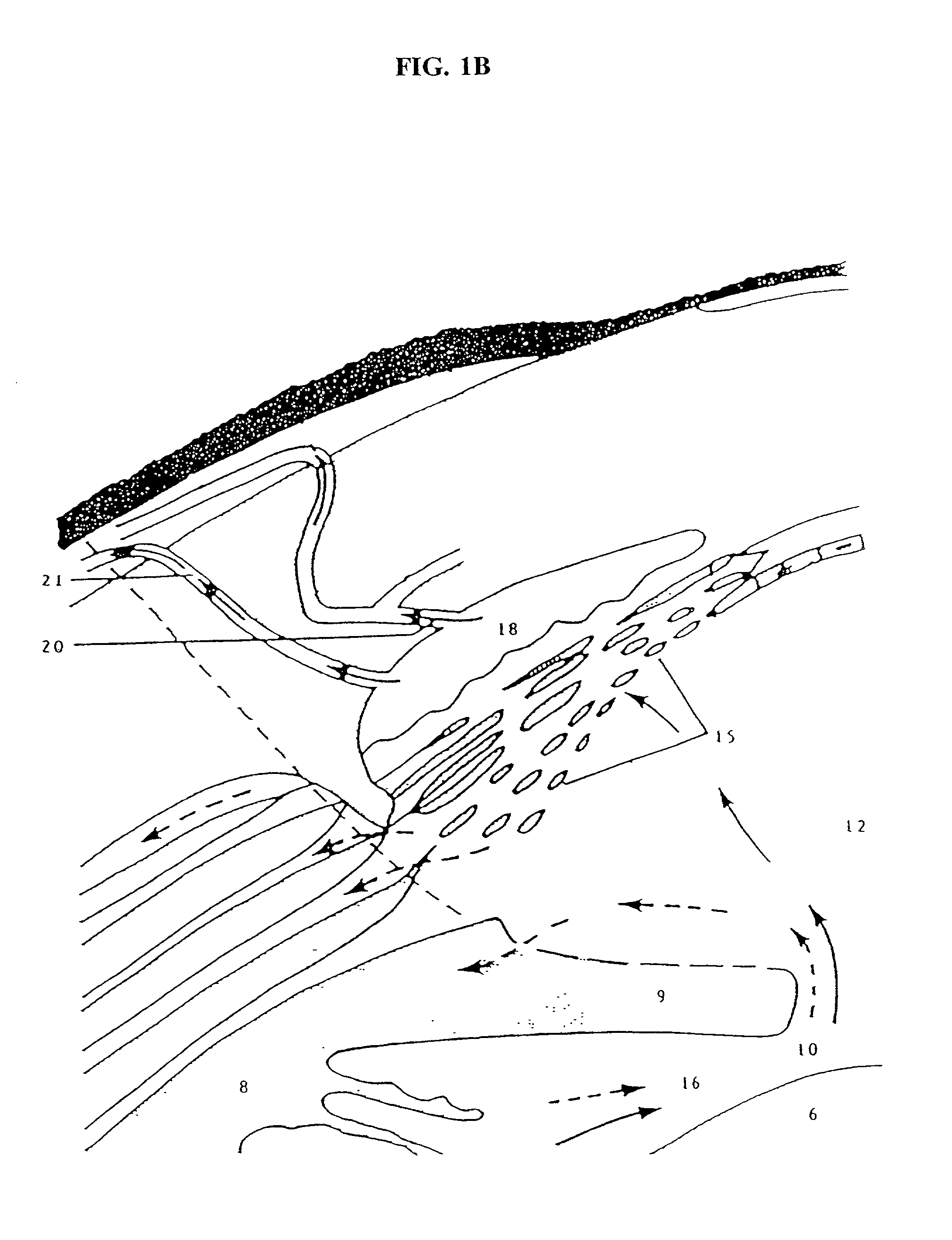Cytoskeletal active agents for glaucoma therapy
a cytoskeletal and active agent technology, applied in the direction of biocide, drug composition, peptide/protein ingredients, etc., can solve the problems of abnormal resistance, loss of vision, disabling vision reduction, etc., and achieve the effect of reducing intraocular pressure and facilitating fluid flow
- Summary
- Abstract
- Description
- Claims
- Application Information
AI Technical Summary
Benefits of technology
Problems solved by technology
Method used
Image
Examples
example 1
Dose-Dependent Affect Of H-7 On Total Outflow Facility Occurs Through A Direct Effect On The Trabecular Meshwork
[0246] This Example describes experiments to examine the dose-dependent effect of H-7 on total outflow facility, as measured by 2-level constant pressure perfusion of the anterior chamber (described above) of both eyes simultaneously with Brny's solution.
[0247] Initially, it should be noted that the protocols for the testing of H-7 (and some of the other compounds, described below) were as follows: (i) after determination of vehicle-only baselines, one eye received drug and the other eye received vehicle without drug; (ii) analogous to the first protocol, with the exception that after the post-drug determination, both eyes received vehicle without drug to determine reversibility of the drug effect; (iii) in monkeys with unilateral disinsertion of the ciliary muscle, both eyes received drug after determination of vehicle-only baseline; (iv) drug-free baseline facility was a...
example 2
H-7 Does Not Significantly Effect Corneal Endothelial Cell Counts At A Concentration Effective At Increasing Total Outflow Facility
[0254] In this Example, the effect of 300 &82 m H-7 on corneal endothelium was determined in cynomolgus monkeys via transcorneal intracameral injection.
[0255] The basic experimental protocol was as follows. Following administration of ketamine (10 mg / kg) anesthesia, slit lamp examination was performed to provide a baseline evaluation of the cornea, lens, and anterior chamber. Thereafter, the monkeys were anesthetized with IM pentobarbital-sodium (35 mg / kg). A 3 mM H-7 solution (2.1858 mg H-7 dissolved in 2 ml Brny's solution, pH adjusted to 6-7) was manufactured, and 10 .mu.l of that solution was administered to one eye and 10 til of Brny's solution to the opposite eye (keeping the needle away from the area to be photographed during the transcorneal intracameral injection). Specular micrographs were taken at 1 and 3 hours after H-7 administration to dete...
example 3
The Effect Of Topical Administration Of H-7 On Outflow Facility In Cynomolgus Monkeys
[0259] Generally speaking, agents used in the treatment of glaucoma are administered topically as an eyedrop, rather than being injected into the eye. This Example describes the results on outflow facility following the topical administration (i.e., via an eyedrop) of four different concentrations of H-7.
[0260] Following administration of ketamine (10 mg / kg) anesthesia, slit lamp examination was performed on the monkeys. Thereafter, the monkeys were anesthetized with IM pentobarbital-sodium (35 mg / kg). Baseline facility was measured (7 periods) by 2-level constant pressure perfusion of the anterior chamber; thereafter, the perfusion system was closed.
[0261] Four H-7 solutions of differing concentrations were manufactured: (i) a 90 mM solution (0.3 mg H7 dissolved in 10 .mu.l of 10% DMSO with Brny's solution, pH of the resulting solution adjusted to approximately 7); (ii) a 150 mM solution (1.1 mg H7...
PUM
| Property | Measurement | Unit |
|---|---|---|
| intraocular pressures | aaaaa | aaaaa |
| intraocular pressures | aaaaa | aaaaa |
| intraocular pressures | aaaaa | aaaaa |
Abstract
Description
Claims
Application Information
 Login to View More
Login to View More - R&D
- Intellectual Property
- Life Sciences
- Materials
- Tech Scout
- Unparalleled Data Quality
- Higher Quality Content
- 60% Fewer Hallucinations
Browse by: Latest US Patents, China's latest patents, Technical Efficacy Thesaurus, Application Domain, Technology Topic, Popular Technical Reports.
© 2025 PatSnap. All rights reserved.Legal|Privacy policy|Modern Slavery Act Transparency Statement|Sitemap|About US| Contact US: help@patsnap.com



